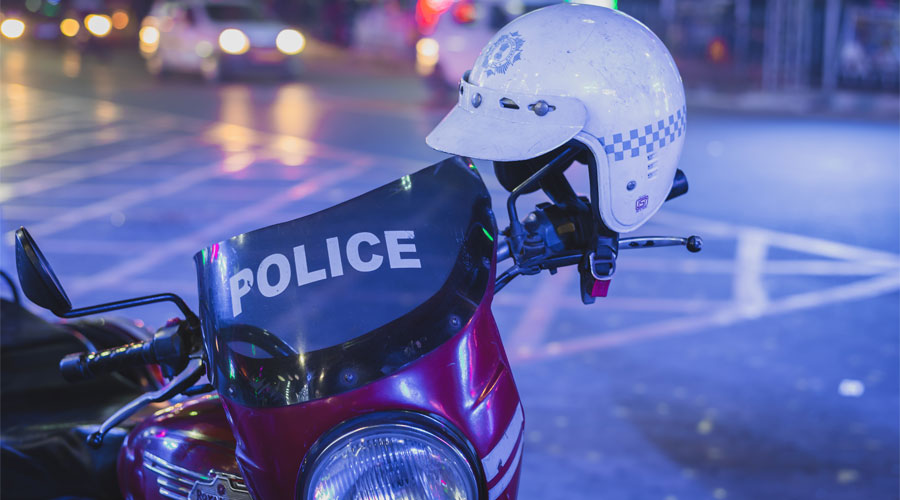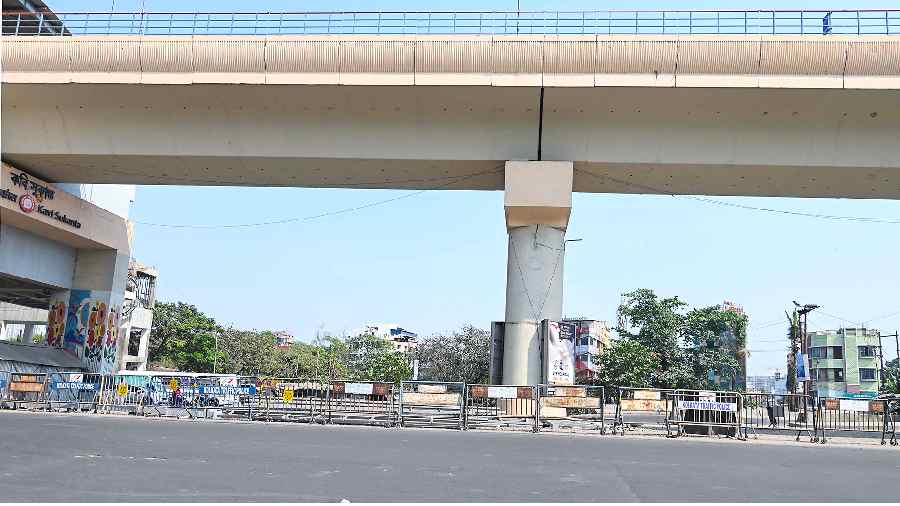Some of Kolkata’s key intersections can be made safer for motorists and pedestrians if police carefully study five aspects — basic geometry of the intersection, signage, signalling system, pedestrian crossover facility and location of bus stop — experts on traffic management from IIT Kharagpur told Kolkata police.
The engineers chose some of the intersections and displayed multiple pictures of each to explain how small changes — such as a slight tweaking of the road markings or altering the signalling time — can help in reducing accidents, police sources said.
The interaction was part of training for the officers for better traffic management in Kolkata. It started on Thursday.
“Take any major intersection and carefully observe the five aspects and you will understand the shortcomings. This is not something big. The deficiencies can be worked upon collectively with the help of other departments,” Bhargab Maitra of IIT Kharagpur, whose interest areas include traffic engineering and transportation planning, told The Telegraph.
“For instance, when a pedestrian walks across a road, he often reaches the other end where the pavement has a railing and there is no space to stand. Instead of engaging in a blame game, the idea is to find a solution to reduce fatalities,” said Maitra, who is among the experts conducting the training for cops.
Senior officers admitted that several major intersections, such as Ballygunge Phari, Ruby, Park Circus, Rashbehari, Shyambazar and Taratala, have problems with traffic engineering and geometry. While some of the issues have been addressed, several others remain unattended.
“Heavy pedestrian crossover, coupled with a mix of vehicles, including autorickshaws, cycles, buses and cars, make these intersections very prone to accidents,” said a senior officer.
While interacting with the officers, experts from the IIT said speed management has to be done scientifically to reduce the number of accidents.
Chances of a fatal accident on a stretch where vehicles are moving at 30kmph is around 10 per cent and it goes up to 90 per cent where the speed is 60kmph, the IIT experts said.
“The city can be divided into a few clusters with a speed limit assigned to each. The speed limit can be 30kmph in areas that have several schools, markets and heavy pedestrian movement. It can be 50kmph in areas with no major pedestrian crossovers. The speed limit in other areas can be 40kmph,” Maitra said.
“It’s not that we will lose our prestige by reducing traffic speed. Urban transportation in several countries in the West, including Germany, has done this to reduce fatality chances in case of a crash.”
Long elevated corridors like the Parama and AJC Bose Road flyovers can have higher speed limits since there are hardly any pedestrian crossovers there and commercial vehicles such as lorries usually do not ply through them. But there has to be a separate lane for two-wheelers if the speed limit on flyovers is increased, the experts said.
The interactive sessions will continue in batches for officers responsible for managing the city’s traffic, senior officers of Kolkata police said. “We have identified a few topics for the experts to dwell on, including `safety at intersections, vulnerability of road users and speed management, so that we can discuss theory and practice through interactions,” Surya Pratap Yadav, deputy commissioner of police, traffic, said.
“Our aim is better traffic management through capacity enhancement.”
Accident
A pedestrian was injured after being hit by an oil tanker at the AJC Bose Road SN Banerjee Road crossing around 3.50pm on Friday. Sundari Midde, 50, is being treated at NRS hospital, police said.

